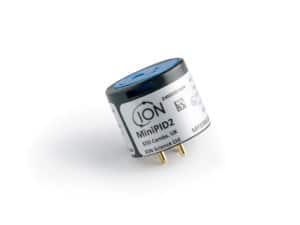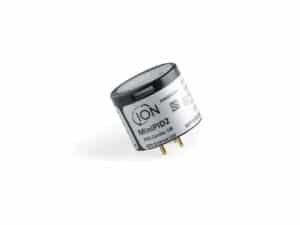Gas Guides
ION Science has a wealth of knowledge of the gases and hazardous gases found across diverse industries and applications and how these gases can be detected. This information has been collated into useful gas guides for you to download.
Home » Gas and Leak Detectors » Resource Center » Gas Guides
ION Science has a wealth of knowledge of the gases and hazardous gases found across diverse industries and applications and how these gases can be detected. This information has been collated into useful gas guides for you to download.
The basics of detecting benzene guide for workers/site safety assists the reader in finding the correct detector to monitor benzene efficiently and safely.
ION Science can assist you in finding the correct gas detector, to monitor volatile organic compounds efficiently for worker and site safety.
The basics of detecting sulfur hexafluoride guide assists the reader in finding the correct detector to detect SF6 efficiently and safely.
The basics of detecting toluene guide for workers/site safety assists the reader in finding the correct detector to monitor toluene efficiently and safely.
The Detecting SF6, for health and safety and to protect the environment guide assists the reader in solutions to detect such greenhouse gas emissions.
Detecting Toluene a member of the BTEX family guide covers topics on btex compounds, source of toluene and toluene detection methods using PID.
The basics of detecting propylene oxide guide assists the reader in finding the correct detector to detect propylene oxide efficiently and safely.
The using propylene oxide in the manufacture of foam rubber guide provides the reader with ways to monitor levels of materials used to produce polyurethane.
An introductory guide to benzene exposure legislation provides information on the massive benefits of using Photoionization Detection (PID) technology.
An introductory guide to benzene exposure legislation provides information on understanding as an employee/worker what your workplace exposures are.
The benzene health and safety operational efficiency guide provides information about fugitive emissions, operational efficiency, and plant turnaround.
A Guide to benzene related health issues provides information on exposure limits and how the government is planning to review and reduce exposure limits.
Is air quality poor in your workplace? Are you aware that you may be exposed to VOCs every day? Find all your answers and ways to detect them in our free guide.
The how to monitor benzene guide identifies why it is vitally important that health dangers and legislative provision are understood to limit exposure.
Our VOC Issues in heavy industries guide talks about the ideal solution for personal worker protection in heavy applications.
The basics of detecting nitrogen dioxide guide assists the reader with a balance of knowledge covering the properties, exposure, and reduction of NO2.
The basics of detecting Hydrogen sulphide guide for workers/site safety assists the reader in finding the correct detector to monitor H2S.
The Basics of Detecting Oxygen guide for worker/site safety assists the reader in finding the correct detector to monitor Oxygen (O2).
The Basics of Detecting Carbon Monoxide guide for workers/site safety assists the reader in finding the correct detector to monitor Carbon Monoxide (CO).
The basics of detecting Sulphur Dioxide guide for workers/site safety assists the reader in finding the correct detector to monitor SO2.
ION Science Inc.
4153 Bluebonnet Dr.
Stafford, Texas 77477
Tel: +1 (877) 864-7710
info@ionscienceusa.com

© 2025 Ion Science USA. Ion Science is registered trademark on Ion Science Ltd
Fill out the form below and our team will get back to you shortly.
Diffusion Fixed Gas Detection Device
A diffusion gas detection device works, as the name suggests, on the diffusion principle. The sensor is exposed to the ambient air and will measure the gas by means of the diffusion principle. Diffusion means proportional spread of molecules over the available space (from high concentration to low concentration). This also means that a diffusion gas detection device is only able to measure the concentration of gases at the location where the device is located. Since there is no forced flow of the gas to be measured, this device is not suitable for taking measurements remotely, but they do accurately identify what’s present in a given location.
Pumped Fixed Gas Detection Device
Pumped instruments are equipped with a built-in sampling pump. This means that the device is constantly drawing in gases. A sampling hose may be connected to extend the reach. This means that you can take a measurement from a safe distance so you have an idea of which gases will be present in which concentration before you are exposed to this environment. This allows you to make an appropriate risk analysis and make the right strategy and PPE choices based on the measurement results. By positioning the measuring hose correctly, you can also make a correct measurement at different heights to chart all risks.
Hub Spot Submit CV form
Register your instrument placeholder for Hub Spot Form
Request a quote — HubSpot form
Please scroll to compare more OEM Sensors
Please scroll to compare all OEM Gas Sensors, tick to hide sensors to compare the most suitable variants.
| Hide | ||||||||
|---|---|---|---|---|---|---|---|---|
| Comparative specifications | 
| 
| 
| 
| 
| 
| 
| 
|
| Sensor Variant | MiniPID 2 PPM WR VOC Sensor | MiniPID 2 PPM VOC Sensor | MiniPID 2 PPB WR VOC Sensor | MiniPID 2 PPB VOC Sensor | MiniPID 2 HS VOC Sensor | MiniPID 2 10.0 eV VOC Sensor | MiniPID 2 11.7 eV VOC Sensor | MiniPID 2 PPB XF Sensor |
| Electrode Stack Colour | Blue | Blue | White | White | Red | White + Gold Spot | White | White + Filter |
| Minimum Detection Limit | 500 ppb | 100 ppb | 20 ppb | 1 ppb | 0.5 ppb | 5 ppb | 100 ppb | 1 ppb |
| Range | 0 to >10,000 ppm | 0 to 4000 ppm | 0 to >200 ppm | 0 to >40 ppm | 0 to >3 ppm | 0 to >100 ppm | 0 to >100 ppm | >40 ppm |
| Response Time T90 (s) | <3 | <3 | <8 | <8 | <12 | <8 | <8 | <12s |
| Sensitivity | >0.4 mV/ppm @ 100ppm | >0.65 mV/ppm @ 100 ppm | >5 mV/ppm | >30 mV/ppm | >600 mV/ppm | >15 mV/ppm | >1 mV/ppm | >30 mV/ppm |
| Lamp Energy | 10.6 eV | 10.6 eV | 10.6 eV | 10.6 eV | 10.6 eV | 10.0 eV | 11.7 eV | 10.6eV |
| Product Details | Product Details | Product Details | Product Details | Product Details | Product Details | Product Details | Product Details |